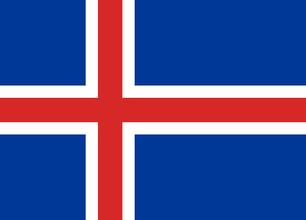Iceland

The Republic of Iceland, referred to as Iceland for short, is an island country in the North Atlantic Ocean. It is located in the interchange between the Atlantic and the Arctic Ocean and is one of the five Nordic countries with a land area of 103,000 square kilometers and a population of about 320,000, and it is the country with the smallest population density in Europe. Its capital is Reykjavik, the largest city in Iceland, with the population living in the southwest part near the capital accounting for two-thirds of the country’s total.
Iceland is located in the mid-Atlantic ridge, and is a geologically active country with multiple volcanic actions. Its inland is mainly plain landscape, and inside the territory there is sandy texture, cooled lava plains and glaciers. Although Iceland is located at the edge of the Arctic Circle, it has a suitable climate as it is influenced by the North Atlantic current.
According to the "Colonial Books", the history of European settlers can be traced back to 874 AD as early as possible, and a lineup of Vergin including Ingólfr Arnarson are the earliest Icelandic permanent settlers, while other earlier settlers only spent the winter in Iceland. Over the centuries, the Scandinavians settled in Iceland, and they brought the Gaelic slaves. Iceland became a part of Norway from 1262 to 1918, and then was put under governance by the Danish royal family. Iceland declared its independence in 1918 and established the Republic in 1944.
Iceland is a highly-developed capitalist country, and its citizens were accessible to Nordic welfare systems such as health insurance and higher education offered by the country. Iceland ranked 13th in the United Nations Human Development Index in 2014. Iceland is the least-populated country in NATO and is also the only country with no standing army with the Coast Guard undertaking the national defense mission.